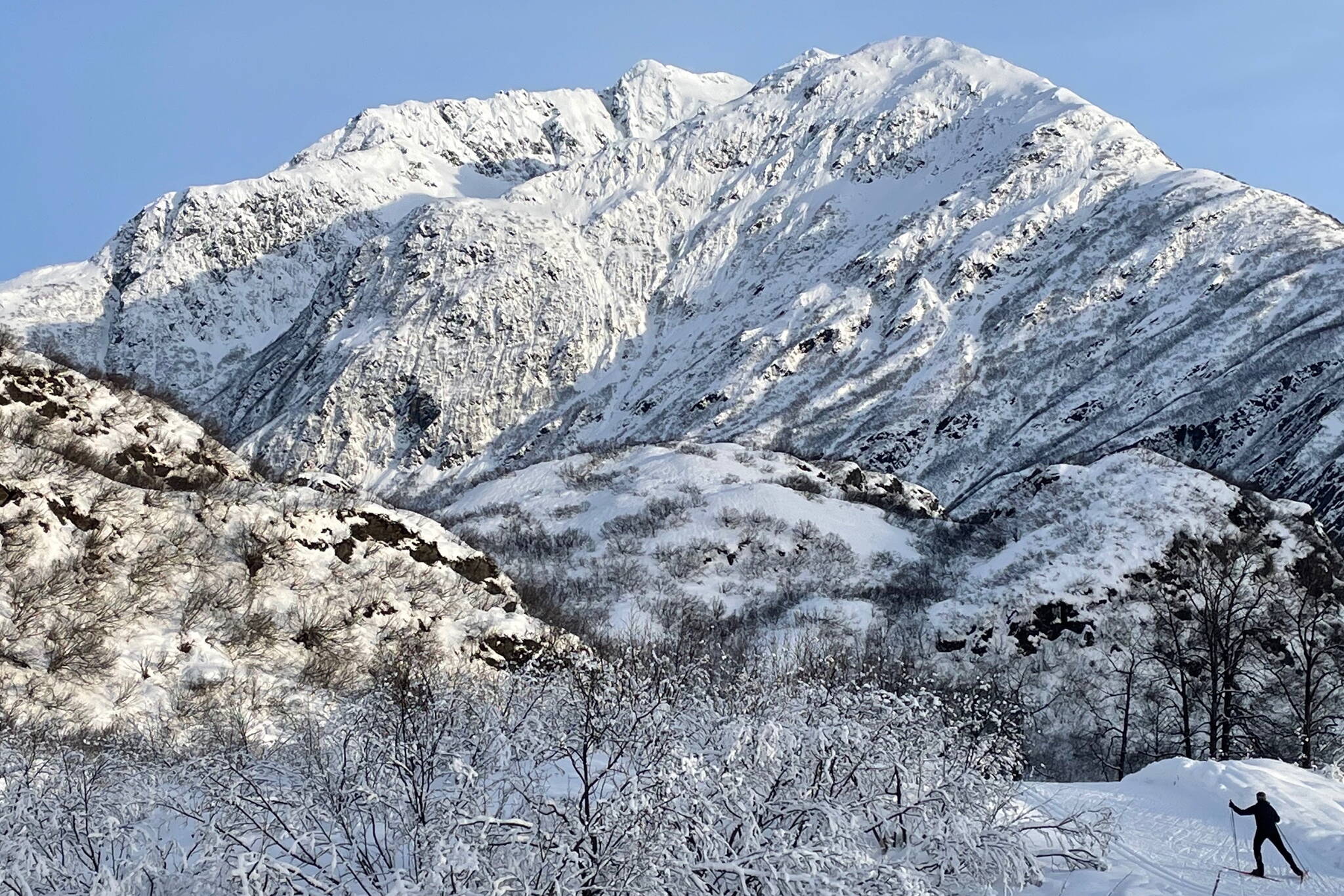With mild temperatures and ample snow, much of Alaska is now primed for cross-country skiing. It’s a sport for all ages, made possible by friction.
According to Samuel Colbeck, a retired geophysicist with the Cold Regions Research and Engineering Laboratory in Hanover, New Hampshire, gliding on skis is like surfing on a microscopic layer of water. The rubbing of ski on snow makes it possible.
Though friction is one of the major forces interfering with glide, it also allows a skier to move efficiently because it creates heat. As a skier slides over snow, weight and friction combine to melt the surface of the ski trail, a process that’s easier to understand close up.
The waxed bottom of a ski and a well-packed trail both look flat, but on a microscopic level they both feature tiny peaks and valleys.
When a wax-coated polyethylene ski base rubs the tops of snow crystals, a tiny portion at the tip of each snow crystal melts. The ski base glides on a film of water about one micron (one-millionth of a meter) thick.
Just a small percentage of a ski base is in contact with the snow at any time. In dry snow at 15 degrees F, for example, researchers found that only one percent of the ski-base area was in contact with the snow surface.
Fresh snow also has a finer grain structure, which makes for more friction-producing contact points. In older snow, the crystals fuse together over time, forming a course-grained snowpack that causes less friction and allows skiers to go faster.
Colbeck said an average skier generates about 200 watts of heat on each ski while gliding. He likened that to the heat given off by two old-school 100-watt light bulbs, spread out over the area where the ski base touches the snow.
An experienced ski racer on a college team has even more melting power, generating about 300 watts per ski. Evidence of a skier’s work is often seen as shiny ski tracks, the collective reflection of polished snow crystals.
Skiing in really frigid temperatures reduces the release of heat, and any chance for decent glide.
Extreme cold reduces the production of meltwater because of the heat lost to a cold ski base, as well as snow crystals and the air. As the temperature drops, a skier works harder, paying a higher energy price for the same glide that seemed effortless near the freezing point.
Though a water film still forms at an air temperature of 10 below zero F, that film is too thin to be an effective lubricant. Tests performed on ski glide on snow at 10 below zero confirmed that skiing on sand would be just as fast.
• Since the late 1970s, the University of Alaska Fairbanks’ Geophysical Institute has provided this column free in cooperation with the UAF research community. Ned Rozell is a science writer for the Geophysical Institute. A version of this column appeared in 1994.

